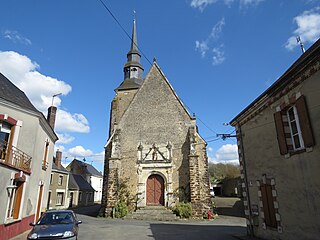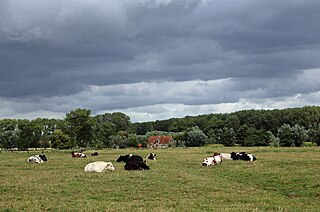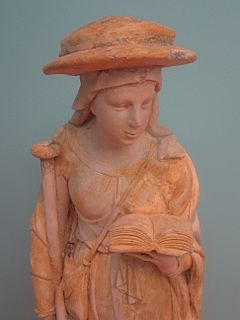
Saint Mansuetus was the first Bishop of Toul.

The Diocese of Verden was a diocese of the Catholic Church. It was founded around AD 768 as a suffragan of the Archdiocese of Mainz. It was suppressed in 1648 as part of the Peace of Westphalia. The diocese was centered on the city of Verden an der Aller in what is today the state of Lower Saxony, Germany. The cathedral church of the diocese was dedicated to Ss Mary and Cecilia in 1028 but the building was only completed in 1490. The Bishop of Verden was also, ex officio, the ruler of a principality of the Holy Roman Empire — the Prince-Bishopric of Verden. The territory of the diocese was not identical with that of the prince-bishopric; while the state was located within the boundaries of the diocese, it amounted to less than a quarter of the diocesan territory. Its last bishop was Franz Wilhelm, Count von Wartenberg. Following the Thirty Years' War, Verden, along with the neighbouring sees of Minden and Bremen, fell into the hands of Protestants. Wartenberg was only able to retain the See of Osnabrück.

Finan Cam, Abbot of Kinnity was an early Irish saint associated with County Kerry, Ireland, who lived in the 6th century AD, and possibly the 7th century. To distinguish him from other saints of the same name the appellation of Cam or "crooked" has been given to him, either because he was stooped or because he had a squint. His feast day is 7 April.
Saint Chuniald was an early Irish priest and missionary who worked for many years in Germany. He lived in the 7th century.
Saint Damhnade was an Irish virgin who was known for working miracles. She is sometimes confused with Saint Dymphna. Her feast day is 13 June. Very little else is known of her.

Saint Osmanna was said to be a virgin of Irish royal origin who lived alone in the woods near the mouth of the Loire in France, performed many miracles of healing, and came to be considered a saint. Her story may have little basis in fact. Her feast day is 9 September.
Saint Tanco was an Scottish abbot, bishop, and martyr in Germany. He is venerated as a saint in the Catholic Church, with his feast day on 6 February or 15 February depending on the liturgical calendar.
Saint Bécán was an Irish monk who founded a monastery at Kilbeggan and is considered by some to be one of the Twelve Apostles of Ireland. His feast day is 5 April.
Saint Dotto was said to have founded a monastery on one of the Orkney Islands, which bore his name. However, there is no island by that name, and no evidence that he existed. His feast day is 9 April.
Saint Wasnulf was a Scottish missionary in what is now Belgium. His feast day is 1 October.
Saint Joavan was an Irish priest and bishop in Brittany.

Saint Vouga was an Irish priest who moved to Brittany, now in France. He attempted to live as a hermit, but could not avoid people who came to him for cures, drawn by his reputation.

Saint Babolen was Abbot of Saint-Maur-des-Fossés Abbey near Paris. He may have been Irish in origin. His feast day is 26 June.
Saint Tochumra was a holy virgin, or possibly two virgins, in medieval Ireland. Her feast day is 11 June.

Saint Guthagon was a possibly Irish hermit who lived in Belgium, most likely in the 8th century, and became venerated as a saint.
Saint Maccai was an Irish missionary who founded a monastery on the Isle of Bute, Scotland. His feast day is 11 April.
Hilarinus was a martyr who died with Donatus of Arezzo during the persecutions of the Roman Emperor Julian. His feast day is 16 July.
Saint Augulus was a 3rd or 4th century bishop and martyr in a town called Augusta in Britain, or perhaps in Normandy. He was possibly Irish in origin. Little is known about him, but his feast day is given as 7 February.

Saint Munde was a Scottish abbot in Argyll, Scotland. There is some confusion between this saint and the much earlier Saint Fintan Munnu. His feast day is 15 April.

Saint Syra of Troyes was an Irish woman, sister of Saint Fiacre, who became a nun in France and died in Meaux but came to be venerated in Troyes. Her story has been conflated with that of a woman named Syria who died in Troyes in the 4th or 5th century. Her feast day is 8 June.